Bombyx mori, the domestic silkworm moth, is a wholly domesticated species of insect. The origin of B. mori is unknown, but is believed to be descended from an extinct moth that shares a common ancestor with the wild silk moth, B. mandarina. Domestication is thought to have originated in China over 5,000 years ago. In 2008 the entire genome of B. mori was published. Domestic lines of silk moths show high genetic diversity, but less than wild populations of related species. This suggests a single event of domestication that happened over a short period of time. However, whether this event happened in one location or in a short period in several locations, remains a mystery. Larvae feed primarily on Morus alba (white mulberry), while adult moths do not feed. Bombyx mori cannot survive without human assistance. Adults have lost the ability to fly. They have also lost color pigments. Silk is harvested from the cocoon of the moth. Approximately 32 million kilograms of silk are produced annually, requiring nearly 10 billion cocoons. In addition to being raised for silk, B. mori is an edible insect in some cultures. In particular, pupae are eaten in India (polu, leta), Korea (beondegi), China (jiang can), Japan (tsukudani), Vietnam (nhộng tằm), and Thailand (nhon mhai). Bombyx mori is no stranger in figure form. Insect Lore produced a life cycle, a larva and pupa was produced by Shine-G, and Kaiyodo made both an adult and larva in two separate Capsule Q Museum sets. Today we will be looking at a set of four figures called ‘Cute Silkworm’ that was produced by Tarlin (a subsidiary of Epoch) in late 2023. These four figures essentially represent the ecdysis process (i.e., hatching from the cocoon to adulthood). The figures are somewhat stylized, but not to the point of appearing unrealistic (B. mori has some interesting morphologies as a byproduct of its domestication). The figures are all made out of a hard, sturdy, and (for their size) almost heavy plastic. They are all painted a very bright white; some detail was hard to capture in the images.
Promo pic:
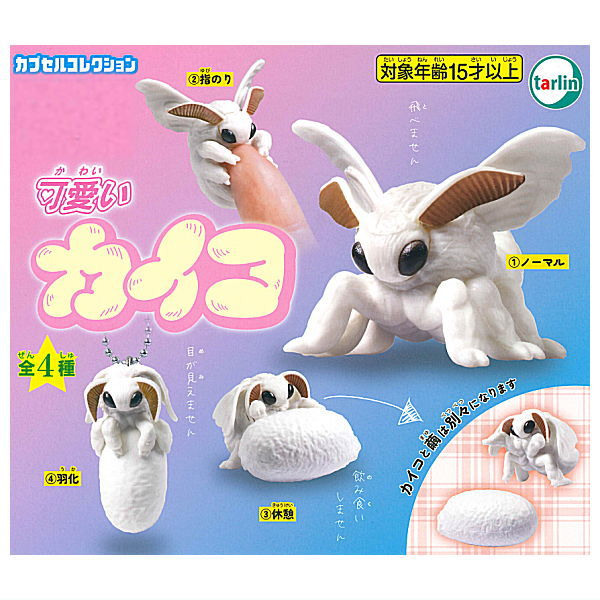
We will start with the adult moth coming out of its cocoon. This is a solid one-piece figure and is also the only one in the set that is a keychain (I have removed the chain, as it easily unscrews from the back of the moth’s thorax). It was probably designed as a keychain as the figure cannot stand on its own.
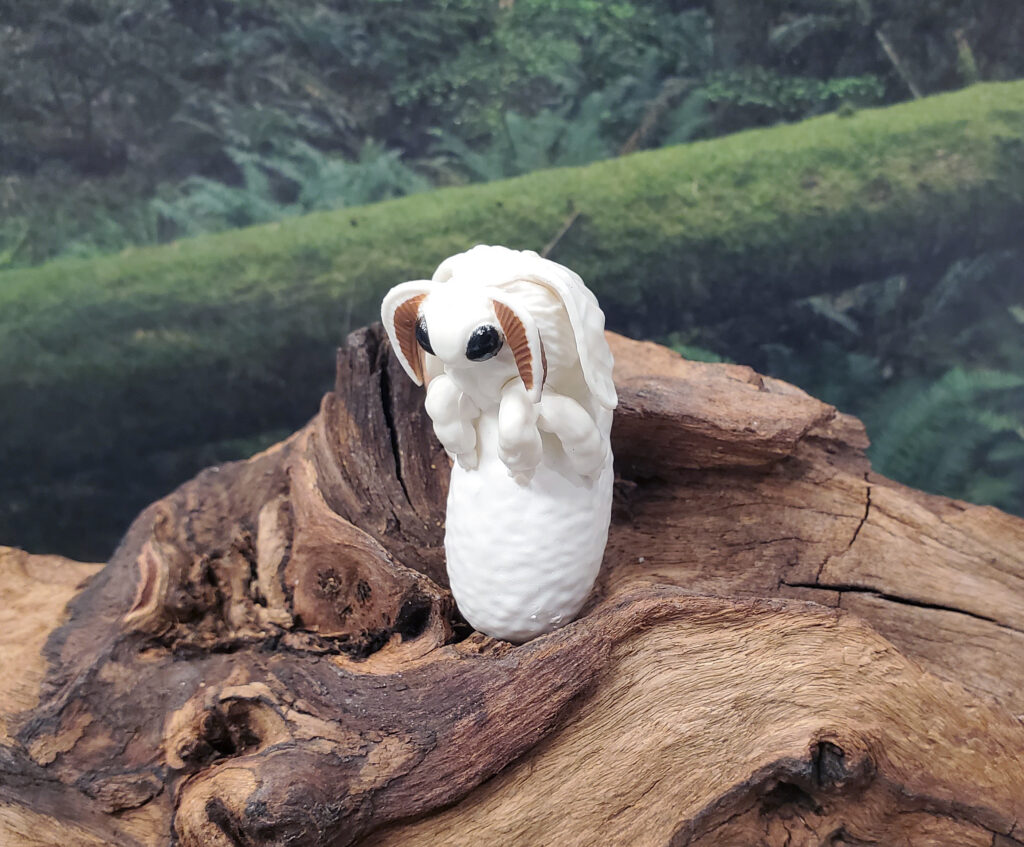
Next up is the recently ecdysed moth. The moth and the ’empty’ cocoon are two separate pieces, but it looks as though the moth is meant to be displayed as if resting on the cocoon. The wings and antennae are still drooping as they haven’t dried thoroughly.

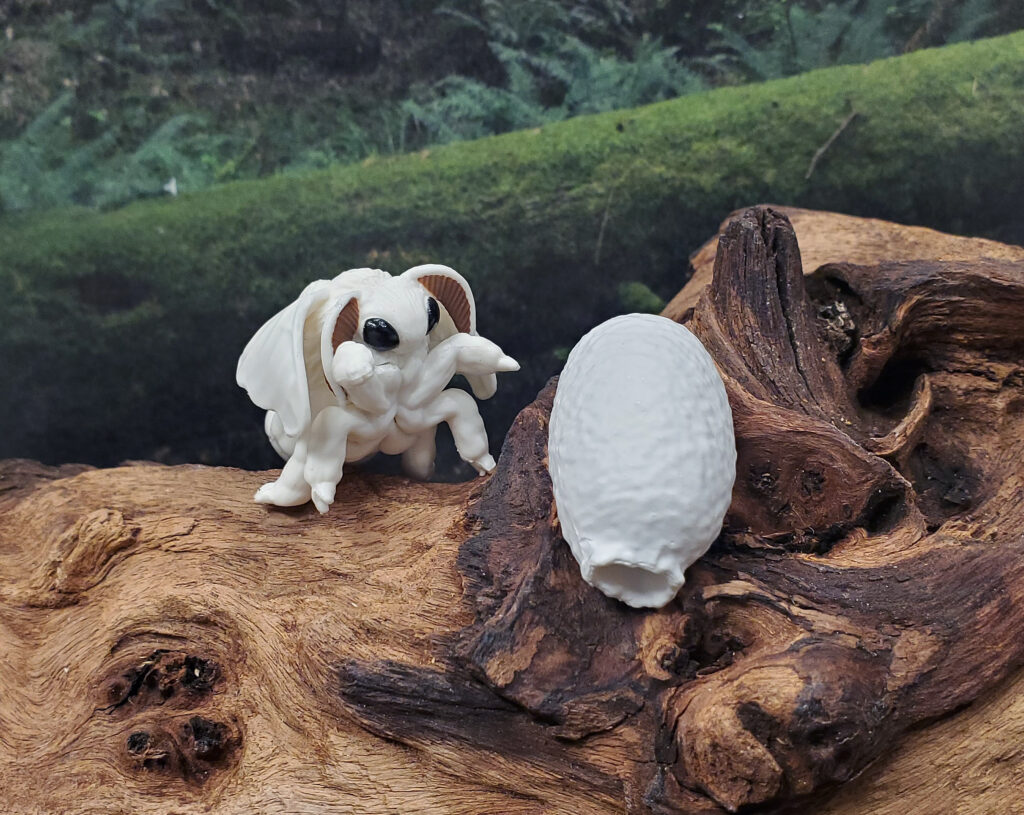
Next is mature adult moth. While adult B. mori has reduced wings, they are still a bit small on this figure, lending to the slightly stylized nature of the design. Still, quite amount of detail went into the ‘hair’ (setae) on the thorax, wing venation, and antennomeres. The wingspan is roughly 4.5 cm, which puts the moths in this set within scale 1:1.
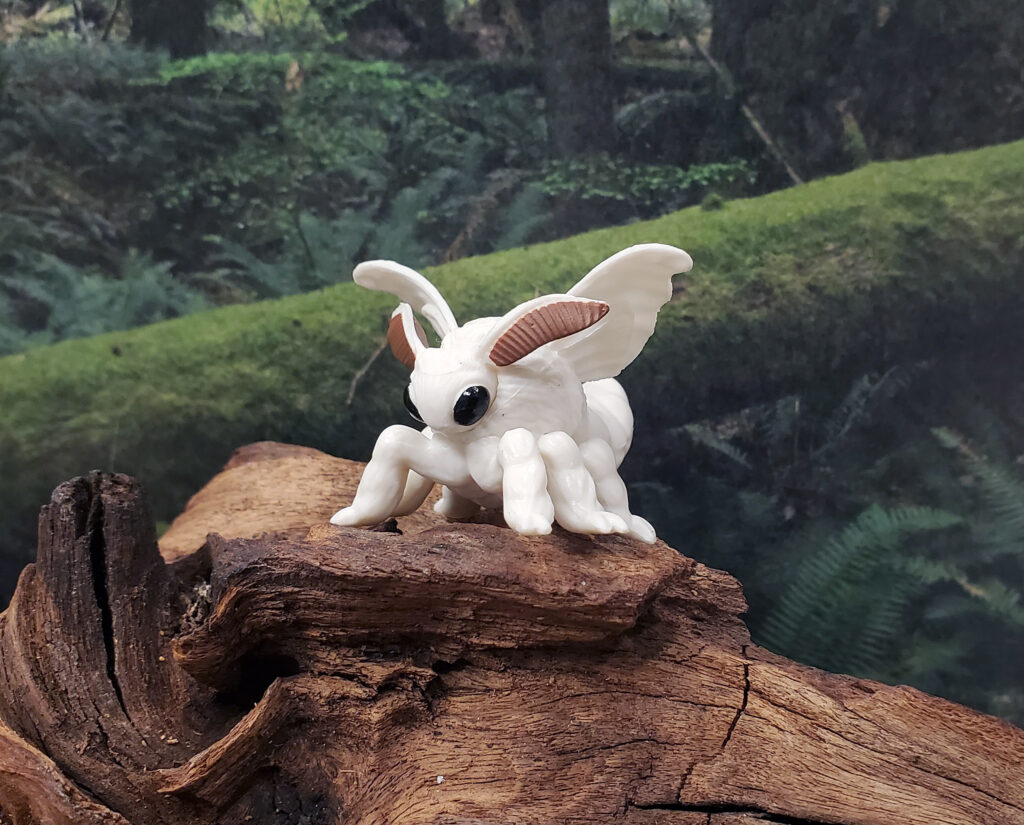
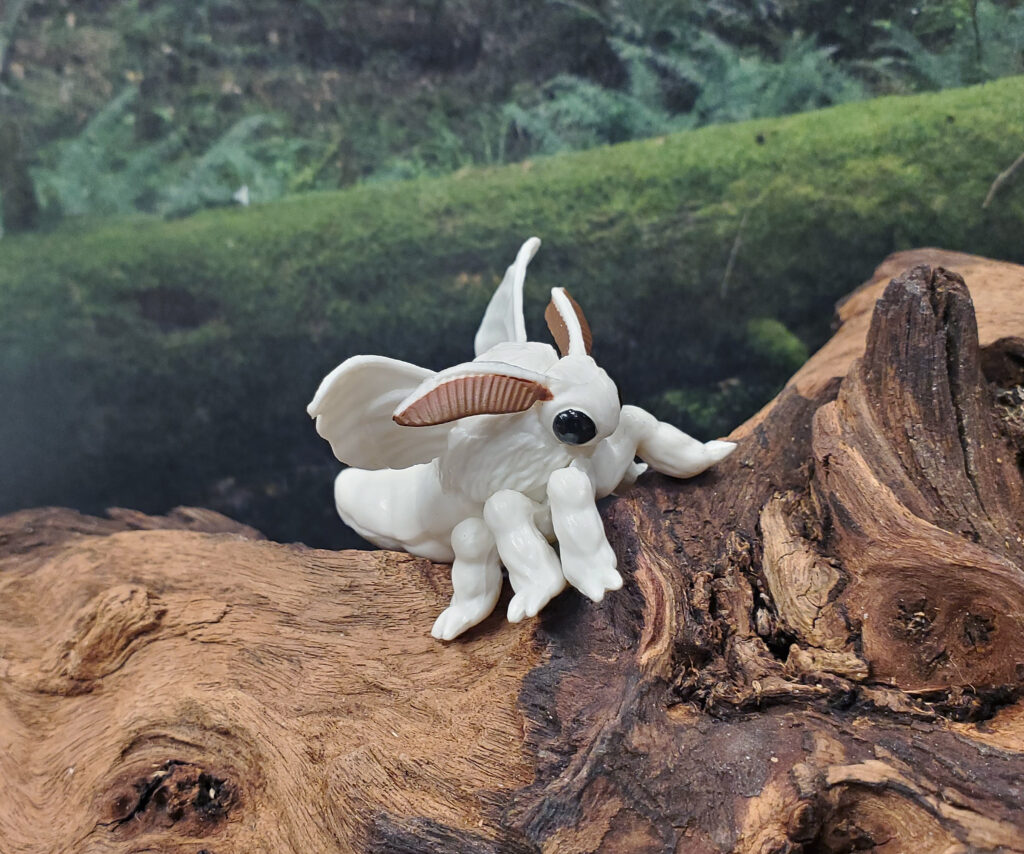
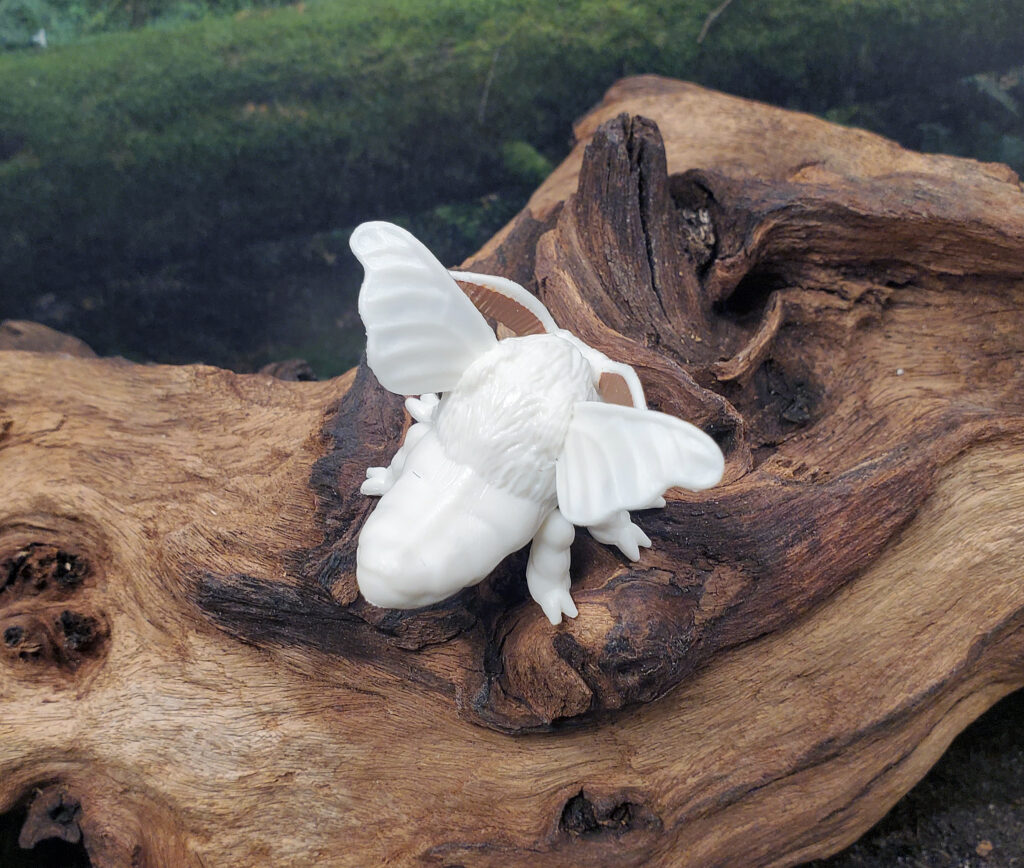
Lastly is another adult, but this one is designed to be worn on a fingertip. As such, like the first figure shown, it does not stand on its own.
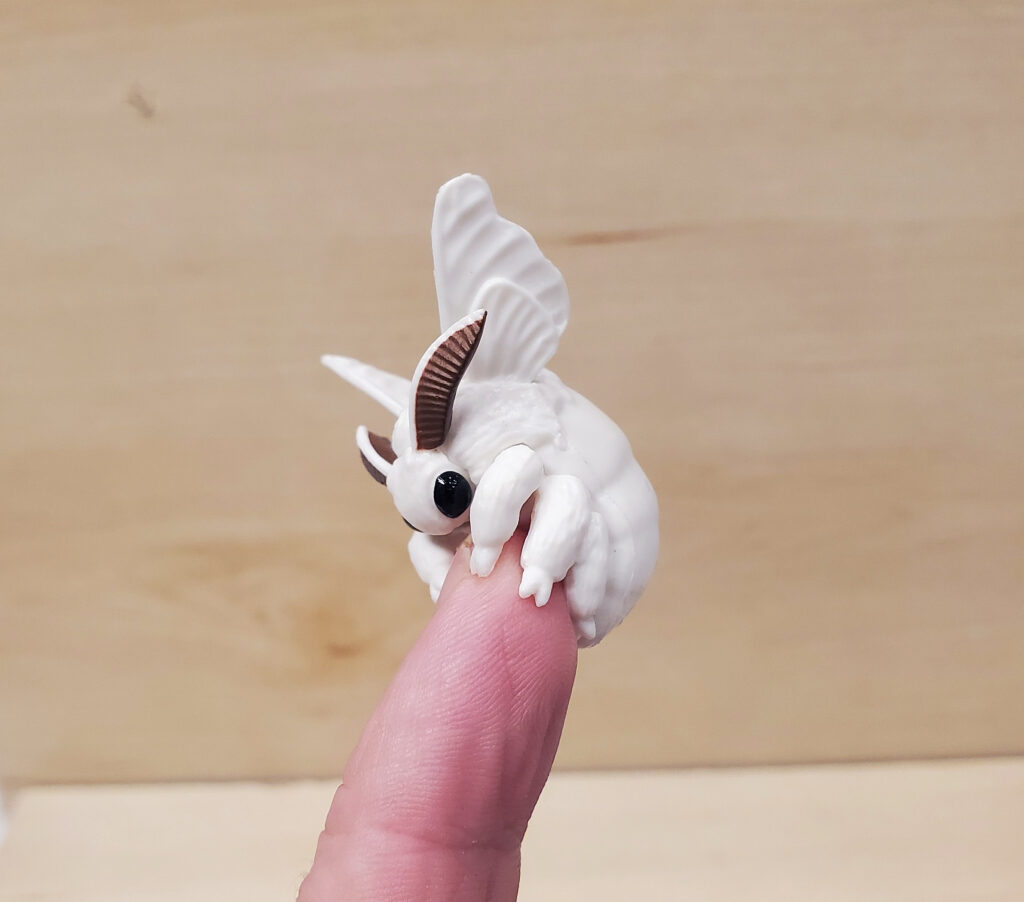

Overall this is a fun little novelty set. It probably appeals most to collectors who specialize in insect figures, but it could also serve as an educational set with regards to insect metamorphosis. It may have been nice to include a larva as well, but the figures in this set can easily be paired with larvae by Insect Lore, Shine-G, or Kaiyodo.
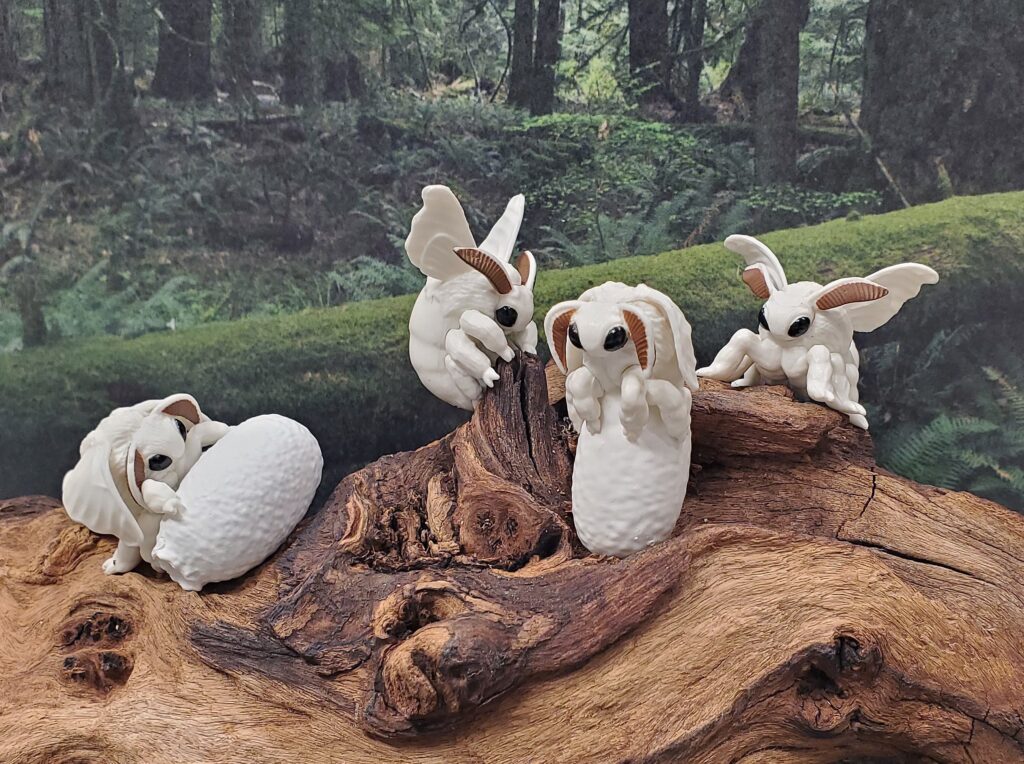
Disclaimer: links to Ebay and Amazon on the AnimalToyBlog are affiliate links, so we make a small commission if you use them. Thanks for supporting us!



